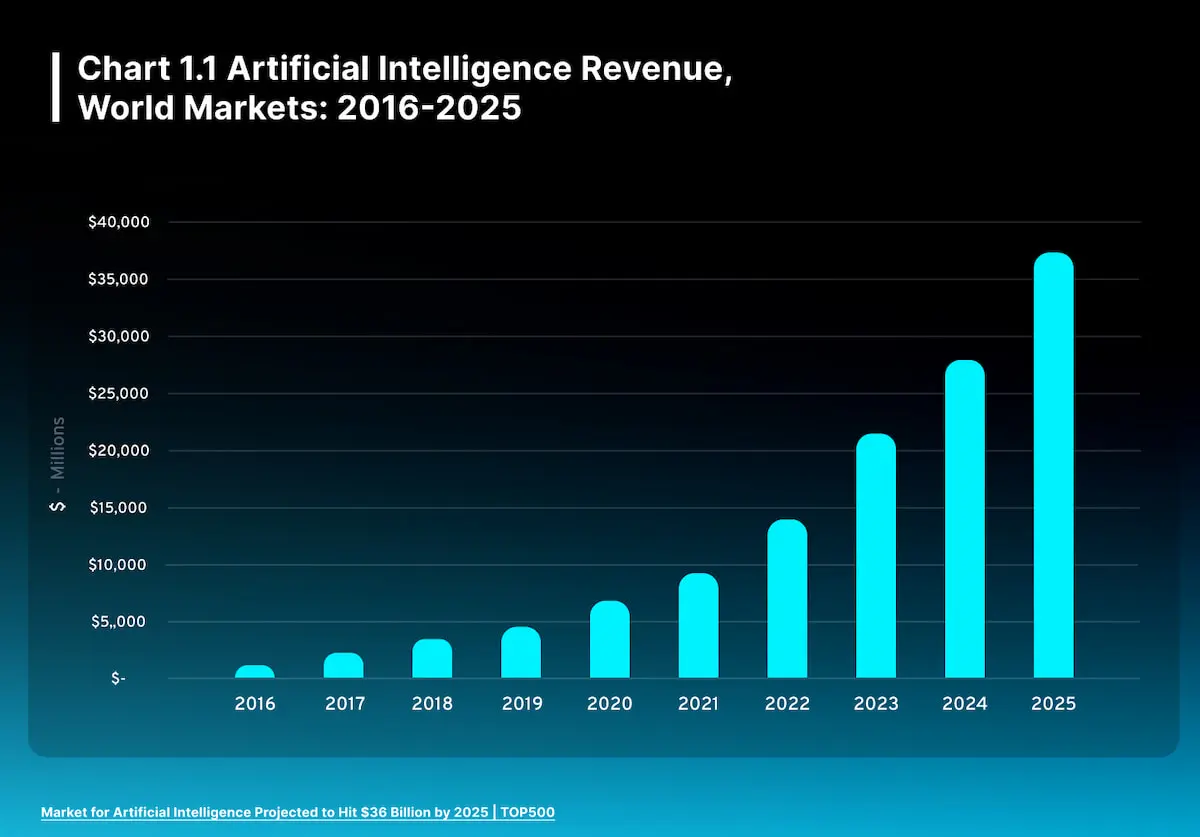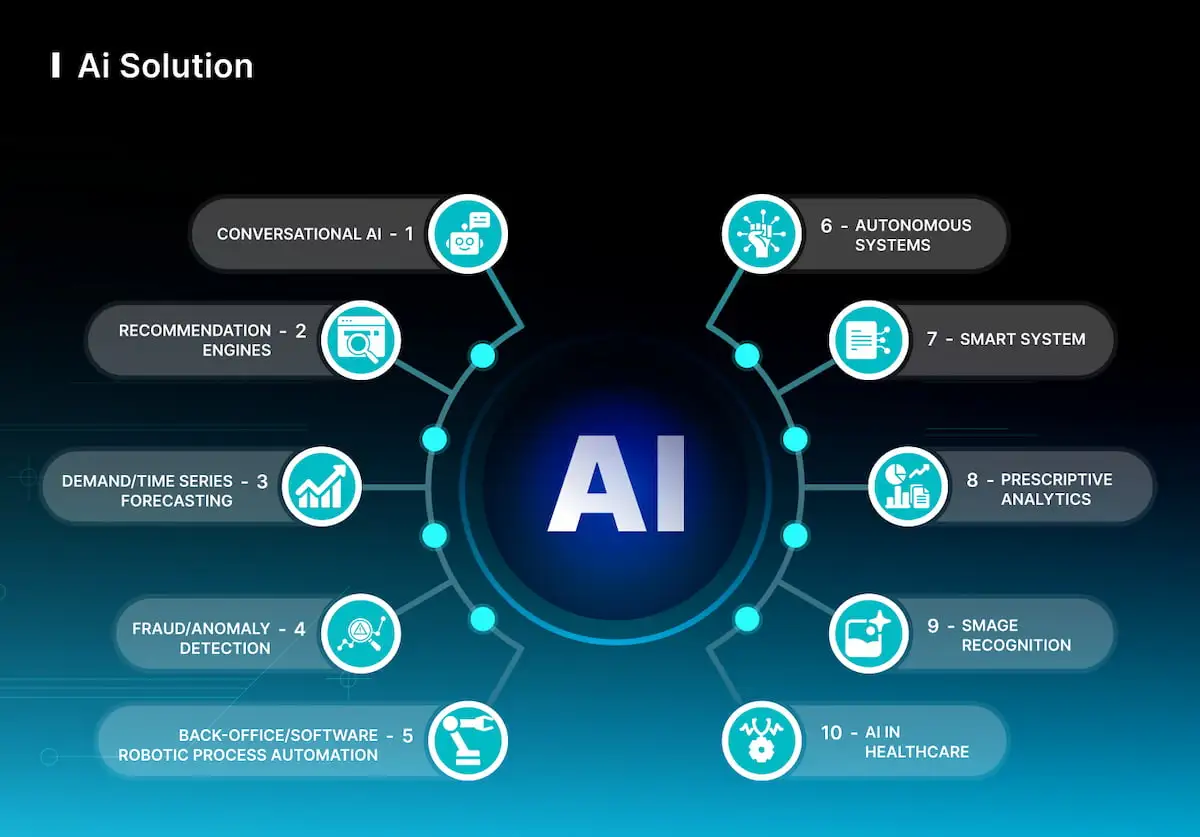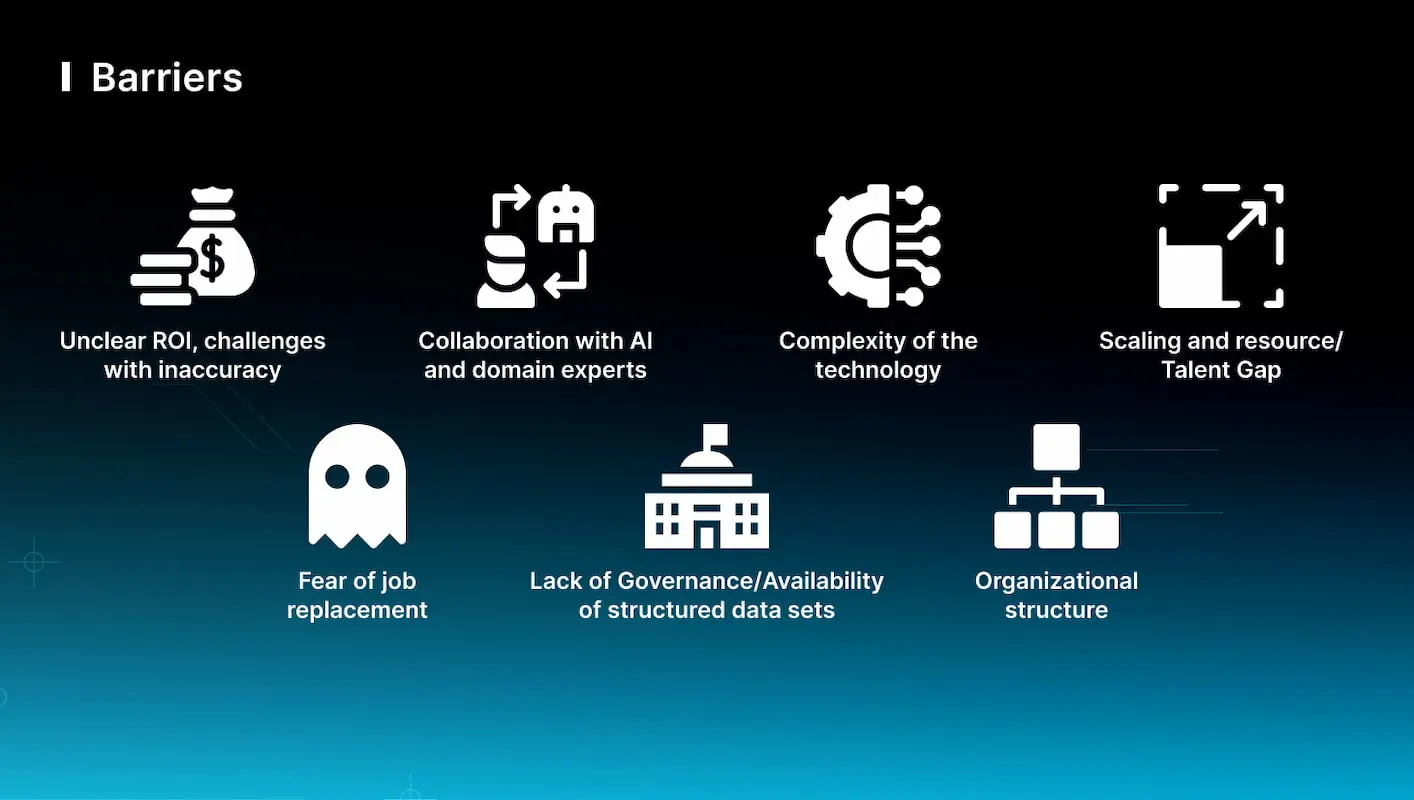Artificial intelligence (AI) is now used everywhere, especially in technology. But is it suitable for your company? It depends on many factors. It’s obvious AI provides enterprises with significant potential, and most executives are aware. According to PwC, 86% of professionals say AI platforms have become integral to their corporate life. Even if AI solutions for business become mainstream, they should not be assessed as an additional instrument.
To use AI effectively, you must learn all aspects; it will allow you to use it tactically to benefit you, your employees, and your goals. Let’s talk about how to add AI to your firm in close collaboration with MetaDialog.
The Importance of Artificial Intelligence in Business Environment
First, let’s define what is AI solutions. These are platforms aimed at adapting aspects of intelligence to computers and allowing them to perform tasks that are natural to humans and difficult to program. Moreover, AI structures are ready to perform such jobs efficiently and autonomously.
According to BCG, even a small investment in a specific AI engine can bring a firm about 6% more revenue, and with increased investment in AI, income may rise by up to 20%. Let’s take a closer look at the importance of adding artificial intelligence business solutions:
- It improves customer collaboration: AI-backed structures can interact with customers in real-time and answer questions as naturally as possible as if a live agent were doing it. AI customer service increases clients’ favorability towards the brand.
- It helps you make quick decisions: if your organization uses an AI-backed solution that processes business activity data, it can predict how many people will want to buy certain commodities. You may also use a platform like this to determine which products must be promoted shortly.
- It reduces operational expenditures: if you use AI solutions for business to automate tasks, you can reduce the number of workers who handle repetitive processes. It will allow your firm to concentrate on other growth sectors, including innovation and expansion.
Your AI structure will learn from past insights and predict what might happen. It also monitors any changes that have already occurred or may occur shortly, e.g., the emergence of new products or price increases.
Some Recommendations on How to Buy AI-Backed Solution
It may seem like AI-backed applications are coming out of nowhere, but they have been developing for a long time. Hundreds of companies are solving sophisticated business problems with AI, and their results are stunning. MetaDialog is here to assist you. We will tell you how to buy AI:
- Identify the company’s needs: at the first stage, identify the main difficulties or tasks you plan to solve with AI-backed platforms. Analyze which activities of your enterprise will benefit the most from adopting AI, e.g., customer interaction, information processing, automation of routine procedures, or creation of forecasts.
- Select precise goals that meet your organization’s needs, e.g., revenue growth, cost reduction, increasing brand awareness and target audience engagement, or creating specific benefits. Such purposes will influence the criteria to assess the effectiveness of your AI-backed solution.
- Explore the latest AI-backed instruments: take the time to explore the industry and identify solutions that best suit your needs and goals. When analyzing, consider the platform’s feature set, scalability, and integration features with other software and your existing ecosystem.
- Estimate the potential of each application: Once you have compiled a list of the most interesting AI-backed structures, you need to make an AI evaluation. When evaluating applications, you need to use the following factors: efficiency, accuracy, ease of use and learning, update frequency, etc.
- Analyze the requirements to interact with databases: as we know, AI-backed platforms rely on information to provide correct training and operation. Determine how much data the instrument requires and in what format. Investigate whether you have the necessary infrastructure to maintain AI tools.
- Study the possibility of scaling: searching for an AI-backed platform often starts with the need to introduce a specific project. There is a possibility that other opportunities will emerge in the future that will provide additional value to AI. Ensure you choose a solution to manage multiple AI use cases from one environment.
- Perform a pilot: before adopting an AI-ruled application, explore the possibility of testing a digital product or proof of concept. It will help you comprehend the tool’s effectiveness in your business environment.
- Estimate the cost of the project and return on investment: compute how much money you must spend on purchasing, implementing, and maintaining the AI-backed platform. Evaluate your ROI by assessing the benefits they can bring to your organization. Compare the income and expenditures of different platforms to select the optimal solution.
- Explore developer support and future update capability: try to find some reviews about AI-backed solutions providers on the Internet. Consider factors like practice, client service, product updates, and the provider’s sustainability.
AI-backed solutions are emerging everywhere and are designed to attract large audiences. Don’t forget you have unique business difficulties to solve. You may need to collaborate with an organization that can assist you in navigating this frequently changing industry and has experience building custom tools optimized for your firm.
How Do You Know When Introducing AI Is the Proper Decision?
Given the active discussion of artificial intelligence, many enterprises are adding it to their activities without considering the feasibility of such a structure. The reality is that although AI-backed instruments are versatile and valuable, such an approach is not always necessary. Let’s analyze how do you know if AI is the right solution:
- Understand your user’s needs: before creating an AI model, you should determine the users’ needs. If your employees think adding AI makes sense, look at the available data to see which technology is best.
- Evaluate the existing ecosystem: sometimes, introducing AI-based solutions into current programs can be expensive and time-consuming. Therefore, experts often recommend choosing programs with an open API architecture. There are platforms with different plugins for the most famous programs; in this case, no additional development is needed. Consider whether AI may successfully complement your ecosystem.
- Review the status of existing data: collaborate with experts to understand the extent of available information and its status. Using only relevant, accurate, complete, unique insights that reflect the current situation is critical. For activities that require a permanent decision-making procedure, it is necessary to ensure continuous access to insights. If you don’t have the optimal volume of quality data, you may want to hold off on introducing AI.
When assessing the feasibility of implementing AI-backed solutions, consider whether purchasing AI-ruled program techniques meets the needs of your team. If so, you need to work on your purchasing tactics as you do on purchasing other modern solutions.
How to Use AI in Business?
According to Statista, the artificial intelligence market will actively develop in the future and generate significant revenues, from $643.7 million in 2016 to $36.8 billion in 2025. It is due to the active introduction of AI in various categories of enterprises.

Let’s consider how is AI used in business:
- AI-ruled unconventional commodities and services: While many firms are just starting to explore the potential of artificial intelligence, some firms are actively utilizing such techniques to produce unconventional goods and services. A prime example is Amazon Alexa and other digital assistants.
- Automate routine activities: Enterprises have been using AI to automate time-consuming tasks, e.g., data entry. They now actively use AI-ruled digital products to manage cognitive objectives, including summarizing reports and drafting communications.
- AI to provide workforce training: Even if an organization cannot automate some activities, AI can still help professionals by offering recommendations to improve the performance of live agents. The Grammarly program and similar platforms use AI to find text errors, correct grammar, and suggest more correct phrases.
- Access to knowledge: AI-backed tools allow employees to deal with a significant volume of data, such as area statistics, and try to find the necessary components and organize information. It should be remembered that platforms such as ChatGPT do not always have the complete insights to generate accurate conclusions.

Manufacturers have been utilizing machine vision as a kind of AI for many years. They are now expanding their use by introducing special applications with deep learning capabilities to increase the speed and precision of quality monitoring platforms without raising expenditures.
The Main Difficulties with Purchasing and Introducing AI-Backed Software
If you’re thinking about purchasing AI software, be prepared to face some challenges. We recommend preparing in advance to make your activities easier. Let’s look at the most prevalent difficulties that arise when purchasing and implementing AI-ruled platforms:
- Selecting the correct database: quality and availability of information are vital to unlocking the full possibilities of AI. Unfortunately, there is no option to configure AI mechanisms to track low-quality and inaccurate information flow.
- Data safety and storage: when creating artificial intelligence services, experts use much information to study algorithms. Although forming a significant database provides optimal opportunities, it also creates information storage and safety difficulties. The more insights are generated, the higher the risk of data leakage on the DarkNet.
- Price: purchasing and introducing AI-ruled structures can be expensive, especially if we speak about small and medium-sized businesses. Expenditures for buying equipment, software, and personnel can increase significantly, making such investments unjustified in some situations. Therefore, enterprises must accurately calculate the payback period before investing in AI.

Don’t forget about the legal complexities associated with creating and adopting AI-backed apps, which the firm must take care of. The information applications receive from consumers is confidential. Inaccurate mechanisms to deal with insights installed in AI applications create incorrect forecasts and bring losses to the enterprise. Moreover, it may violate regional regulations, and you must bear legal liability.
Final Words
It is not always possible to form a personal team of AI developers. AI engineering resources are limited and expensive. You must be prepared that launching and monitoring research takes up much time the company could spend on its core business. While finding a reliable AI provider can be challenging, delegating some of your responsibilities to MetaDialog significantly benefits your enterprise.
The MetaDialog team brings together industry professionals and innovators to discover business potential and develop original content to provide the rapid introduction of artificial intelligence and machine learning techniques. The firm strives to generate the tactics and resources necessary to enable enterprises to utilize AI solutions for business to reach maximum prosperity. Experts are constantly studying the potential of the IT sector, blockchain, business apps, etc.
